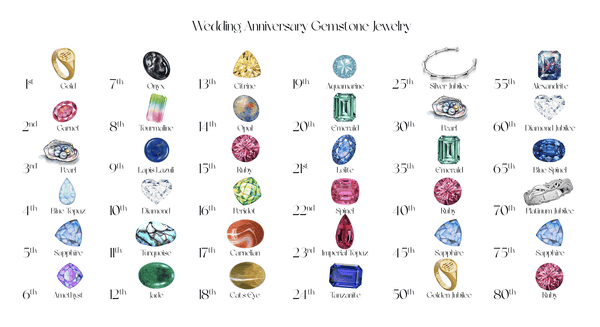Gold Jewelry cleaning tips
Unlike silver jewelry, gold jewelry does not tarnish after a period of use. However, gold jewelry is also prone to stains and irritation. To restore the shine of your precious jewelry such as rings, earrings, pendants, bracelets, necklaces and other gold jewelry, you need to prepare a few everyday items and raw materials. Whether. Follow these steps!
Clean Jewelry with Dishwashing Liquid
Step 1 : Put a few drops of dishwashing liquid in a bowl of warm water (do not use hot water). Stirred. Regular tap water can be used, but for best results you can use sodium-free xenomineral water or use carbonated water. The amount of carbonate in these solutions will help remove dirt and plaque. Do not use hot or boiling water, especially if your jewelry has gemstones. Some gemstones, such as opals, can crack when the temperature fluctuates.
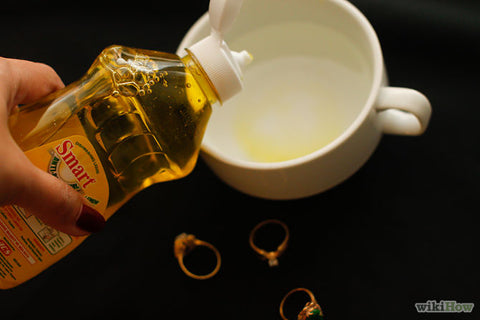
Step 2 : Soak the jewelry in the solution. Soak for about 15 minutes. When soaking, warm soapy water will slip into the crevices and wash away dirt that you can't reach.
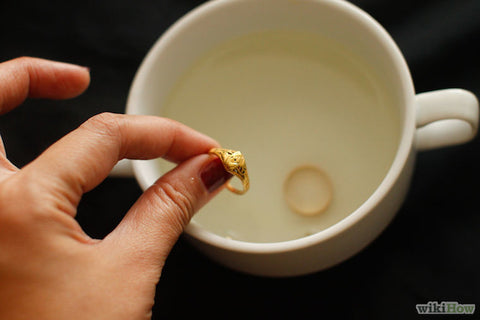
Step 3 : Gently scrub the jewelry with a soft-bristled brush. Scrub them one at a time, paying attention to crevices and nooks and crannies where dust can hide. Use a soft-bristled brush – the softer the better. Hard-bristled brushes can scratch the surface of jewelry. If the jewelry you use is gilded (as opposed to pure gold), using a stiff bristle brush will remove the plating! It's best to use brushes designed specifically for scrubbing purposes, but most small, soft-bristled brushes (such as eye brushes) also work well.
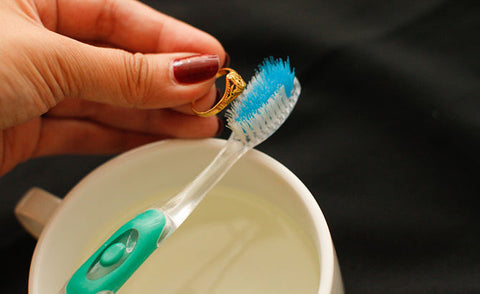
Step 4 : Rinse jewelry with warm water. Rinsing with water will help remove any remaining dirt after scrubbing with a brush. And remember not to use hot water, especially with jewelry with stones. If you wash your jewelry in the sink, be sure to cover the drain so you don't lose your jewelry if it accidentally slips out of your hands. Alternatively, you can also place jewelry in a sieve used when cooking pasta or a coffee strainer to wash.

Step 5 : Use a soft cloth to dry. After cleaning, place the jewelry on a piece of cloth to allow it to dry before use. Wearing wet jewelry prevents moisture from escaping from the skin, causing discomfort to the skin.
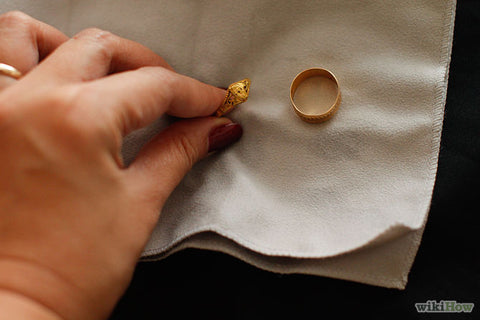
Cleaning Jewelry with Ammonia
Step 1 : Know when to use ammonia. Ammonia is a strong detergent, but chemically it can be corrosive. Avoid using ammonia to clean gold jewelry too often to prevent wear and tear – ammonia is a good candidate for the occasional (but not very often) "root cleaning" of jewelry. Ammonia can damage some materials commonly used to make jewelry. Ammonia should not be used to clean gold jewelry containing platinum or pearls.

Step 2 : Mix one part ammonia to six parts water. Stir gently so that the mixture is evenly mixed.

Step 3 : Soak the jewelry in the mixture for no more than 1 minute. Don't soak in ammonia for too long – it's a strong bleach and can corrode jewelry. To quickly remove all the trinkets from the solution, use a sieve like you would when cooking pasta. Either you can use a hand sieve to scoop out the jewelry, or you can pour the bowl of the jewelry soaking solution into a large sieve placed in the sink.

Step 4 : Rinse jewelry with water. Be sure to cover the drain hose to avoid losing your jewelry if it slips out of your hands. Alternatively, you can wash your jewelry using the sieve you use to remove the jewelry from the ammonia solution.

Step 5 : Gently dry the jewelry with a soft cloth. Place the jewelry on a cloth to allow it to dry before use.

Cleaning Gemstone Jewelry
Step 1 : Know what types of jewelry should be kept dry. Stones (such as earrings) should be avoided in contact with water. Warm water can loosen the glue and gems can fall out, especially when you're scrubbing with a brush. For these types of jewelry, use a separate cleaning method to avoid contact with water.
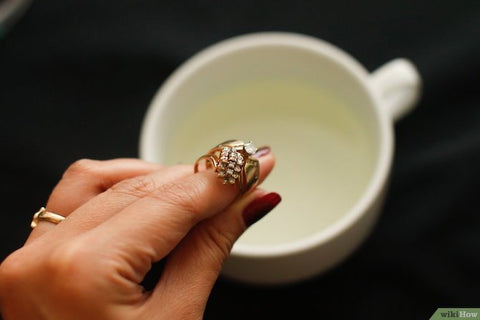
Step 2 : Use a cloth soaked in soapy water as in Method One to clean the jewelry. Dip a soft cloth in the solution and gently rub it into your jewelry.

Step 3 : Dip another piece of cloth in clean water to "wipe" the jewelry. Dampen the cloth gently to remove any remaining soap bubbles.

Step 4 : Hang the jewelry upside down after cleaning. Let dry. By placing the jewelry upside down, standing water will flow out, so that they will not penetrate the internal structure of the jewelry.
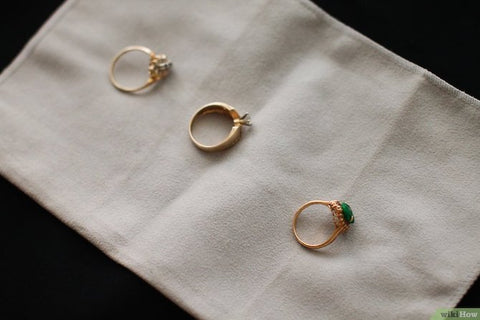
Clean Jewelry with Toothpaste
Step 1 : Dissolve a small amount of toothpaste in water. Squeeze about 3cm of toothpaste into a bowl (or into your hand!) and add a tablespoon or two of water to make a thin paste. Acting as a mild abrasive, toothpaste is great for removing dirt build-up on your favorite jewelry without scratching them. You can use this method to quickly clean jewelry you often wear or when you don't have time to practice other methods (when you're traveling, for example).
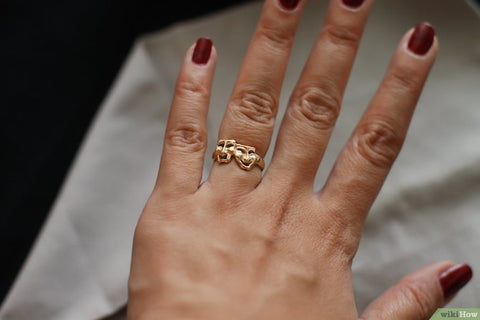
Step 2 : Use a toothbrush (soft bristles) to scrub. Use an old toothbrush with soft bristles and toothpaste to gently scrub away dirt. Toothpaste also has a polishing effect. If you see scratches on your jewelry, it's most likely caused by a brush – the softer the brush, the better! In addition, you can also rub toothpaste directly on jewelry without adding water. However, doing so will make it difficult to remove the cream left in the small crevices.
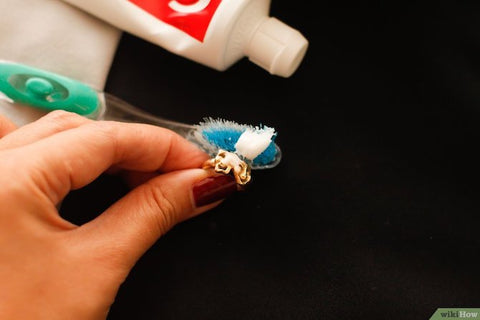
Step 3 : Rinse with water. Just like you need to rinse your mouth after brushing your teeth, rinse your jewelry to remove excess dirt!
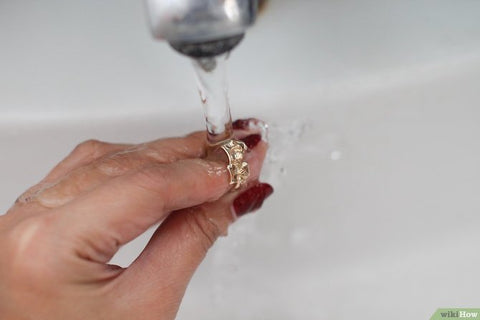
Clean Jewelry with boiling water
Step 1 : Know when to use boiling water. Gold itself has no problem being boiled. However, boiling precious stones (such as opals, pearls, corals, moonstones) can crack or damage them – especially if they are cold before boiling. Boiling is also not a good idea for jewelry with rhinestones, as it will cause them to loosen. However, if you want to clean jewelry made entirely of gold or jewelry with "hard stones" (like diamonds), boiling is a great way.
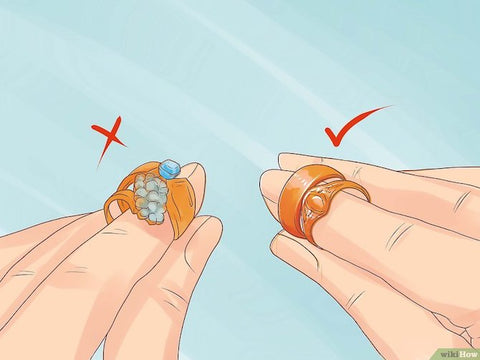
Step 2 : Boil water. You don't need to boil a lot of water – just use enough water to submerge the face of the jewelry. While waiting for the water to boil, place the jewelry in a hard bowl or basin, choosing materials that won't break when used with boiling water. Heat-resistant glass or metal bowls/plates are perfect choices. Arrange jewelry in plates or bowls so that they do not overlap – each piece must be submerged in water.
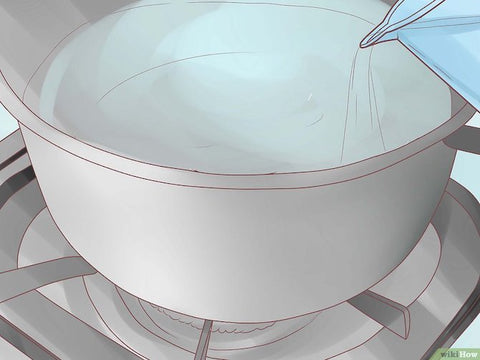
Step 3 : Pour water slowly over the jewelry. Be careful not to pour too quickly as the water can overflow or splash – boiling water can cause severe burns.
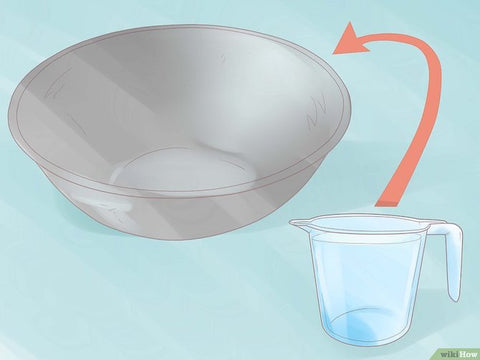
Step 4 : Wait for the water to cool. Wait until you can comfortably put your hand in the water before you can remove the jewelry. Next, use a soft-bristled brush to scrub each piece of jewelry and pat dry with a soft cloth, then let them dry completely.

Don't panic when the water looks too dirty – this is a good sign! Since boiling water removes dirt, soil, plaque, etc. from jewelry, these impurities may float to the surface of the water. The dirtier the water looks, the more dirt has been removed from your jewelry!
Advice
Store gold jewelry so that they are not scratched. Each piece should be placed in a separate jewelry bag.
You can remove stubborn grease stains from gold jewelry by dipping them in an alcohol-based solution (except those with gemstones).
Remember that you can take your jewelry to the gold shop for cleaning at any time.
Note
Do not use bleach. In fact, solutions containing chlorine should not be used on jewelry, as they can discolor the jewelry.
Cat's eye pearls are very fragile. Avoid using chemicals, abrasives, toothpaste, or ultrasonic cleaning methods, and instead gently wipe them with a tissue designed specifically for wiping your face or with a piece of silk cloth.
If you own gold rings with diamonds or other gemstones, make sure their lugs are not damaged to prevent gems from falling out.
Source: Wikihow

